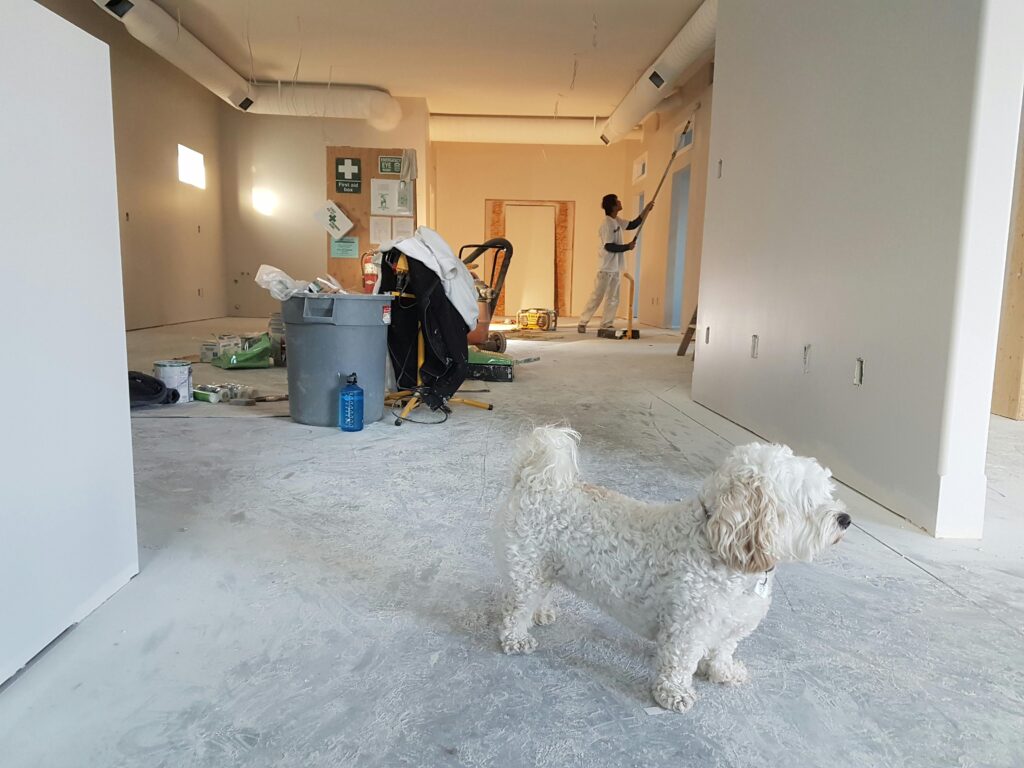Understanding Home Project Permits
Home renovation and improvement projects can be exciting and rewarding, offering the opportunity to enhance living space, increase property value, and improve functionality. However, before diving into the actual work, homeowners must consider the legal requirements associated with construction and renovation. One critical aspect of this preparation is understanding permits. A permit acts as an official approval from local authorities allowing homeowners to proceed with specific projects on their property. It ensures that the work complies with local building codes, zoning laws, and safety standards.
Permits are not just bureaucratic hurdles; they are essential for maintaining quality and safety within a community. They guide homeowners in adhering to established standards, which are designed to prevent shoddy workmanship and protect the integrity of neighborhoods. Understanding when a permit is required can save homeowners from potential legal and financial troubles. It’s crucial for homeowners to familiarize themselves with local regulations and permit requirements before embarking on any home renovation project.
In addition to ensuring compliance, permits can also serve as a valuable record for future property transactions. When selling a home, buyers often request proof that all work was completed legally and up to code. Having a comprehensive record of permits can reassure potential buyers and increase the home’s marketability. Therefore, understanding the nuances of home project permits is not only a matter of legal compliance but also a strategic move for long-term property value.

Why Permits are Important for House Projects
Permits play a pivotal role in maintaining safety and quality across house projects. They ensure that construction or renovation adheres to local building codes, which are designed to safeguard the health and wellbeing of occupants. These codes address various aspects of construction, including structural integrity, fire safety, electrical systems, and plumbing. By requiring permits, local authorities can enforce these standards, thereby minimizing risks associated with poorly executed projects.
Beyond safety, permits also protect homeowners from potential legal complications. Undertaking a project without the necessary permits can result in hefty fines, legal battles, or even the requirement to dismantle completed work. For instance, if an unauthorized addition to a home is discovered, the homeowner might be forced to remove it entirely, leading to significant financial loss and inconvenience. Thus, securing the appropriate permits is a preventive measure that protects homeowners from such undesirable scenarios.
Additionally, permits serve as a mechanism for dispute resolution. In cases where project outcomes are contested, having a permit can provide a concrete reference point that establishes the legal parameters within which the work was performed. This can be crucial in resolving conflicts with contractors, neighbors, or even local authorities. Therefore, permits are not just a formality but a foundational element of responsible homeownership and project management.
Common House Projects That Require Permits
Several common house projects typically require permits to ensure compliance with local regulations and safety standards. Understanding which projects need permits can help homeowners plan accordingly and avoid potential issues down the line. Here are some examples of projects that usually require permits:
- Structural changes: Any modifications that alter the structure of a home, such as removing or adding walls, require a permit. This ensures that the structural integrity of the building is maintained and that the changes comply with building codes.
- Electrical work: Installing new electrical systems or making significant changes to existing systems often necessitates a permit. This includes adding new circuits, wiring, and outlets to ensure safety and adherence to electrical codes.
- Plumbing projects: Major plumbing work, such as installing new pipes or replacing existing ones, typically requires a permit. This ensures that the plumbing system meets health and safety standards, preventing issues like leaks or contamination.
Obtaining permits for these projects not only ensures compliance but also provides peace of mind that the work is being done correctly. Homeowners should consult with local authorities or professionals to determine if a specific project requires a permit and follow the necessary procedures to obtain one.
House Projects That Typically Don’t Need Permits
While many projects require permits, there are also several common house projects that typically do not require permits. These projects are generally considered minor and pose minimal risks to structural integrity or safety. Here are some examples:
- Painting and wallpapering: Interior and exterior painting, as well as wallpapering, usually do not require permits. These projects are cosmetic in nature and do not affect the building’s structure or systems.
- Flooring changes: Replacing or installing new flooring, such as carpet, tile, or hardwood, typically does not require a permit. These projects are considered non-structural and do not impact the home’s safety.
- Simple landscaping: Basic landscaping tasks, such as planting flowers or shrubs, do not usually require permits. However, more extensive landscaping projects, such as building retaining walls or installing irrigation systems, might require permits depending on local regulations.
Homeowners should still exercise caution and verify with local authorities if they are unsure whether a project requires a permit. While these projects usually do not need permits, regulations can vary by location, and it is always better to be informed and proactive.

How to Check If Your Home Project Requires a Permit
Determining whether a home project requires a permit involves conducting thorough research and consulting with relevant authorities. Homeowners can start by visiting their local government website or building department to access information about permit requirements. These resources often provide detailed guidelines and lists of projects that require permits, offering a good starting point for homeowners.
Another effective approach is to consult with professionals, such as contractors or architects, who are familiar with local regulations. These experts can provide valuable insights and help homeowners navigate the permit process. Additionally, they can offer advice on how to ensure compliance and avoid potential pitfalls.
Ultimately, the best way to confirm if a permit is needed is to contact the local building department directly. Speaking with a representative can provide clarity and allow homeowners to address any specific questions or concerns. By taking these steps, homeowners can ensure they are fully informed and prepared to proceed with their projects responsibly.
Steps to Obtain a Permit for Your Home Project
Once it has been determined that a permit is required for a home project, the next step is to understand the process of obtaining one. While the specific steps can vary depending on the location and nature of the project, the following general steps are commonly involved:
- Prepare documentation: Homeowners need to gather and prepare the necessary documentation, which typically includes detailed plans, drawings, and specifications of the project. These documents should provide a clear overview of the work to be done and demonstrate compliance with local codes and regulations.
- Submit the application: With the documentation in hand, homeowners must submit a permit application to the appropriate local authority, such as the building department. This step often involves filling out forms and paying a fee, which can vary based on the scope and complexity of the project.
- Await approval: After submitting the application, homeowners must wait for the permit to be reviewed and approved. This process can take anywhere from a few days to several weeks, depending on the workload of the building department and the intricacies of the project.
By following these steps and maintaining open communication with the relevant authorities, homeowners can obtain the necessary permits and proceed with their projects confidently and legally.
The Consequences of Skipping Permits
Neglecting to obtain the required permits for house projects can lead to a range of undesirable consequences. First and foremost, unpermitted work can result in substantial fines and penalties. Local authorities take permit violations seriously and can impose significant financial repercussions on homeowners who proceed without approval. These fines can far exceed the cost of obtaining a permit in the first place, making it a costly oversight.
In addition to financial penalties, unpermitted work can also lead to legal issues. Homeowners may face legal action from local authorities, neighbors, or even previous owners if the unauthorized work is discovered. This can result in lengthy and expensive legal battles, as well as potential requirements to undo or modify the work to meet code compliance. The stress and inconvenience of dealing with such issues can be overwhelming, making it clear that skipping permits is not worth the risk.
Furthermore, unpermitted work can impact the future resale value of a home. When selling a property, buyers often conduct thorough inspections and request documentation for any renovations or improvements. If unpermitted work is discovered, it can deter potential buyers and lead to reduced offers or even lost sales. Ensuring that all work is properly permitted not only protects homeowners legally but also safeguards the long-term value and marketability of their property.
Tips for a Smooth Permit Application Process
Navigating the permit application process can be daunting, but with the right approach, homeowners can streamline the experience and avoid unnecessary complications. Here are some tips for ensuring a smooth permit application process:
- Plan ahead: Begin the permit application process well in advance of the planned project start date. This allows ample time for gathering necessary documentation, submitting the application, and waiting for approval. Rushing the process can lead to mistakes and delays, so proactive planning is key.
- Consult professionals: Engaging with experts, such as contractors and architects, can provide valuable guidance throughout the application process. These professionals have experience navigating permit requirements and can offer insights into potential challenges and solutions.
- Maintain open communication: Regularly communicate with the local building department and any involved professionals to stay informed about the status of the application. Promptly addressing any questions or concerns can prevent misunderstandings and expedite the approval process.
By following these tips and approaching the permit process with diligence and attention to detail, homeowners can set themselves up for success and ensure a smooth path to project completion.
Hiring Professionals for Permit-Required Projects
For some projects, hiring professionals is not only advisable but essential. Complex or large-scale house projects that require permits often involve specialized knowledge and skills that are beyond the scope of DIY efforts. By enlisting the expertise of professionals, homeowners can ensure that the work is performed to the highest standards and in compliance with all relevant regulations.
Professionals, such as licensed contractors, architects, and engineers, bring a wealth of experience and expertise to the table. They are well-versed in local building codes and can navigate the permit application process efficiently. Additionally, they can provide valuable insights and recommendations, helping homeowners make informed decisions about their projects and avoid potential pitfalls.
Hiring professionals also offers peace of mind and reduces the risk of errors or oversights. With skilled experts overseeing the project, homeowners can feel confident that the work will be completed safely, correctly, and within the established legal framework. This not only ensures compliance but also enhances the overall quality and longevity of the finished project.
Conclusion: Ensuring Compliance and Safety in Home Projects
Embarking on a home project requires careful planning and consideration, particularly when it comes to permits. By understanding the importance of permits, recognizing which projects require them, and following the necessary steps to obtain them, homeowners can ensure that their projects are completed safely and legally. This not only protects the integrity of their home but also safeguards their investment and future resale value.
Compliance with permit requirements is not just a legal obligation; it is a commitment to quality, safety, and responsibility. By prioritizing permits and engaging with relevant professionals, homeowners can enjoy the benefits of their projects without the worry of legal complications or substandard workmanship.
For those considering a home project, the first step is to research local permit requirements and consult with experts who can guide them through the process. By taking these proactive measures, homeowners can set themselves up for success and confidently transform their homes while ensuring compliance and safety.
If you’re planning a home project and want to ensure everything is done by the book, consult with local professionals and your building department today. Don’t leave anything to chance—secure the permits you need and enjoy your home improvements with peace of mind.

FAQ
1) Why are permits important for home projects?
Permits ensure compliance with local building codes, safeguarding the health and safety of occupants. They help prevent shoddy workmanship and protect the integrity of neighborhoods.
2) What are common home projects that require permits?
Projects like structural changes, electrical work, and major plumbing projects typically require permits to ensure they meet safety and building standards.
3) What are some house projects that usually don’t need permits?
Minor projects like painting, wallpapering, flooring changes, and simple landscaping generally do not require permits as they pose minimal risks.
4) How can homeowners check if a permit is needed for their project?
Homeowners can visit local government websites, consult with professionals, or contact the local building department to determine if a permit is required for their project.